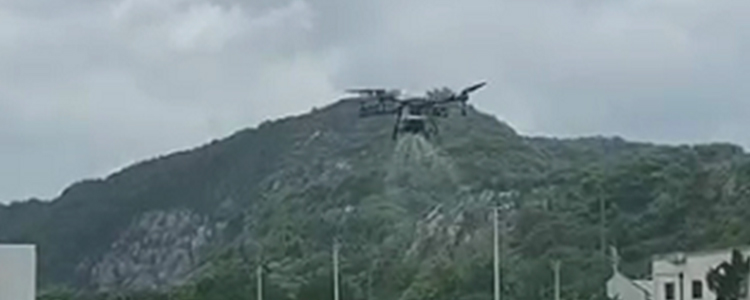Solid fertilizer broadcasting by drones is a new agricultural technology, which can improve the utilization rate of fertilizers, reduce labor costs, and protect the soil and crops. However, drone broadcasting also needs to pay attention to some matters in order to ensure the safety and effectiveness of the operation. Here are some considerations for solid fertilizer broadcasting by drones:
1) Choose the right drone and spreading system. Different drones and spreading systems have different performances and parameters, and you need to choose the right equipment according to the operational scenarios and material requirements. Hongfei's newly launched HF T30 and HTU T40 are both automated spreading equipments developed specifically for the seeding and plant protection segments of agricultural production.

2) The operating parameters are adjusted according to material characteristics and acreage usage. Different materials have different particle sizes, densities, fluidity and other characteristics. It is necessary to select the appropriate bin size, rotational speed, flight height, flight speed and other parameters according to the material to ensure uniformity and precision of the sowing. For example, rice seed is generally 2-3 kg/mu, and it is recommended that the flight speed is 5-7 m/s, the flight height is 3-4 m, and the rotational speed is 700-1000 rpm; fertilizer is generally 5-50 kg/mu, and it is recommended that the flight speed is 3-7 m/s, the flight height is 3-4 m, and the rotational speed is 700-1100 rpm.
3) Avoid operating in unfavorable weather and environmental conditions. Drone spreading operations should be carried out in weather with wind less than force 4 and without precipitation such as rain or snow. Rainy weather operations can cause fertilizer to dissolve or clump, affecting downward material and results; excessive wind can cause material to deflect or scatter, reducing accuracy and utilization. Care should also be taken to avoid obstacles such as power lines and trees to avoid collision or jamming.

4) Regularly clean and maintain the drone and the spreading system. After each operation, the materials left on the drone and the spreading system should be cleaned in time to avoid corrosion or clogging. At the same time, you should check whether the battery, propeller, flight control and other parts of the drone are working properly, and replace the damaged or aging parts in time.
The above is the article on the precautions to be taken by drones for solid fertilizer broadcasting, and I hope it will be helpful to you.
Post time: Jul-25-2023